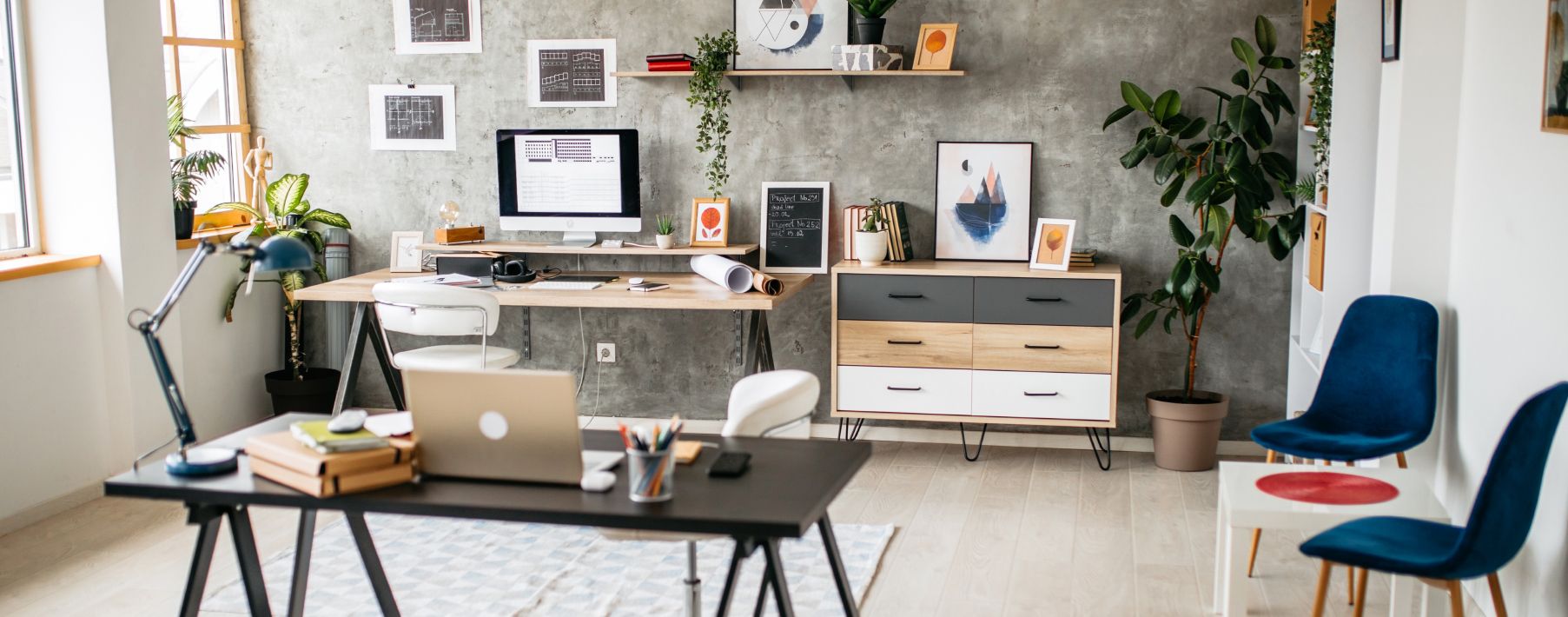Personal Property Insurance Guide: Protect Your Belongings

It makes sense to purchase insurance coverage for the most costly things in your life, such as your home and your vehicle. But there are plenty of other things you probably own that, if lost or stolen, would still be inconvenient or even financially difficult to replace.
Personal property insurance offers loss and theft insurance coverage for the things you own and is available as part of your homeowners casualty insurance policy. It can provide you with peace of mind if your home is damaged or destroyed by a covered peril. It can also help replace certain valuable belongings stolen outside the home, such as cell phones, jewelry, and even a personal laptop.
Here's a rundown of a homeowners policy's personal property coverage portion, which belongings are protected, how much this coverage costs, and how much personal property protection you may want to buy to protect the things you own adequately.
Key takeaways
-
Personal property insurance is the portion of your homeowners (or renters) policy that protects your personal belongings.
-
This coverage is often set at a default of 20% to 50% of your home’s insured value.
-
Following a covered loss, personal property coverage steps in to repair or replace your items at either their replacement cost or actual depreciated cost (depending on the policy terms).
-
Most carriers will allow you to increase your policy’s personal belongings coverage limits if needed.
-
If you have a house full of stuff or certain high-value items, increasing your coverage limits or adding a separate valuable property rider or endorsement may be wise.
What is personal property insurance coverage?
Personal property insurance is the portion of your home insurance policy that protects your personal belongings from theft, accidental loss or damage. When you buy a condo or home insurance, personal property coverage is often automatically added to the policy, usually as a percentage of your structure coverage. However, you can adjust this coverage, insuring personal possessions for more or less than the default.
You also have a few options when deciding the type of personal property insurance you want and which losses you want your stuff protected from.
-
Named peril policies only provide coverage from specific disasters or other events listed in your policy. If a peril that isn't listed occurs, your resulting loss usually won't be covered.
-
Open peril policies generally provide protection from any perils that aren't explicitly specified as exclusions in insurance coverage. If a peril occurs and results in a loss, you’ll typically have personal property coverage as long as the peril wasn’t listed as an explicit exclusion.
What is the difference between personal property and contents?
Personal property insurance is often referred to as home contents insurance or even Coverage C personal property insurance, and there is no real difference between the two (other than the name).
The confusion comes into play when you start talking about types of property insurance. Most homeowners insurance policies offer home and contents insurance, protecting your structure and belongings. However, when you purchase renters insurance (also known as an HO-4 insurance policy), you only buy contents coverage since you don't own the dwelling.
What does personal property insurance cover?
Personal property insurance provides coverage for anything you bring into your home. This means that it doesn't cover things like appliances or fixtures already installed on the property but will include your belongings, such as your clothes, furniture, home decor, electronics, kitchen gadgets, and more.
Whether you're a budding woodworker with many tools in the garage or just love collecting the latest tech, your stuff will be protected just the same. Homeowners insurance personal property coverage also extends to your guests’ belongings while they’re staying at your home, so you’ll be covered from any accidents or break-ins that occur while hosting family or friends.
Most personal property insurance coverage is under a named peril policy, meaning your items will be protected from damage that occurs due to certain perils named in your policy. Typical hazard insurance for homes includes perils like:
-
Accidental water overflow or steam
-
Aircraft or vehicles
-
Artificially generated electrical current
-
Explosions
-
Falling objects
-
Fire or smoke
-
Freezing temperatures
-
Hail
-
Lightning
-
Riots
-
Theft
-
Vandalism
-
Volcanic eruption
-
Weight of ice, snow or sleet
-
Windstorm
What does personal property insurance not cover?
Although personal property homeowners insurance coverage is extensive, it doesn’t protect from everything.
Generally, your belongings won’t receive protection from perils such as tornadoes, hurricanes, earthquakes, or even water damage that occurs after a flood or sewer backup. For those, you’ll usually need to purchase a separate insurance rider. Depending on your carrier, you may have the option to buy coverage like water damage insurance, flood insurance, or even water backup coverage.
Standard personal property insurance doesn’t cover things like cars or pets. If you’re a renter, any items that belong to your landlord and are kept at your home are excluded. And unless your roommate is specifically listed on your policy, their belongings won’t be covered either.
Personal property insurance also doesn’t cover any damage done to your home’s structure or any personal liability issues that may arise. If you have a comprehensive home insurance policy, though, dwelling insurance and personal liability coverage are generally included.
Lastly, it's worth noting that reimbursement limits may apply to costly covered items like jewelry or technology. These limits can vary by policy and item type, so be sure to read your insurance policy documents carefully to understand your specific monetary caps.
How much does personal property insurance cost?
Many factors determine the cost of your personal property insurance coverage. These include things like your location, coverage limits, and even the type of homeowners insurance coverage you have.
Your premiums can also depend on whether you have an actual cash value (ACV) or replacement cost value (RCV) personal property policy. Generally, replacement cost insurance costs more upfront than actual cash value since the latter accounts for depreciation.
Since personal property coverage is built into the cost of your overall homeowners insurance policy, it can be difficult to determine how much of your premium goes toward your dwelling coverage and how much goes toward personal belongings.
How much personal property insurance coverage do I need?
The answer to this question varies depending on your budget, what your insurance company offers, and how much you own.
The average personal property value typically ranges from 20% to 50% of the policy’s dwelling coverage amount. However, you may want to expand that if you have a lot of particularly expensive items. For example, if your home has coverage for up to $450,000, you should aim for your personal property protection to be in the range of $90,000 to $225,000. If you have a fair amount of tech, art, antiques, or valuable equipment, you’d want your coverage on the higher end of that range.
To determine how much personal property coverage you need, you may want to conduct a home inventory. A comprehensive look at your valuables and their worth will give you a good idea of the minimum amount of coverage you need. But as most insurance experts will tell you, it's often worth going a bit over what you think you need to ensure that you've adequately protected your belongings.
How to get more personal property coverage
Once you understand personal property coverage and how much protection your belongings need, you might consider adding more coverage to your homeowners insurance policy. If you look at your declaration page and feel your policy limits are not where you want them to be, you have options.
-
You can purchase scheduled personal property coverage to extend your coverage limits and the number of hazards from which your items have protection.
-
You can add individual riders for specific items, such as HVAC systems coverage.
-
You could opt to purchase coverage for certain high-value items in your home. This could mean buying jewelry insurance or a separate valuable personal property insurance (VPP) policy for valuable art, antiques, guns, furs, cameras, etc.
-
You may even choose to look into home warranty vs home insurance coverage to give your appliances extra protection.
Your included personal property coverage is a great way to protect the everyday items in your home. However, adequately protecting all of your belongings — especially those of high value — can often mean buying coverage outside the standard limits of your homeowners policy.
Still have questions?
Here are the answers to some of the most frequently asked questions regarding personal property insurance.
What is scheduled personal property coverage?
Scheduled personal property coverage is the portion of your homeowners insurance policy that protects your personal belongings, such as your clothes, furniture, home decor, kitchen gadgets, electronics, and more. This coverage can help pay to repair or replace the things in your home if your property is damaged or destroyed by a covered peril.
What is a personal articles policy?
A personal articles policy offers added coverage for your valuable items on top of the coverage already provided by your homeowners policy’s personal property coverage. This special personal property coverage can be used to protect high-value items such as jewelry, antiques, fine art, tech equipment, and even medical devices.
Is personal property coverage required in renters insurance policies?
A renters insurance policy protects your personal belongings while you live in someone else's home. By design, renters insurance offers personal property coverage and, in many cases, personal liability insurance. If you don’t want to protect your belongings and are only interested in liability protection, you can purchase stand-alone liability coverage or even an umbrella policy.
Is personal possessions insurance worth it?
If your home were to burn down tomorrow, your homeowners insurance policy’s dwelling coverage would kick in to help you rebuild and get a roof back over your head. However, the dwelling portion of your coverage wouldn’t replace your closet full of clothes and shoes, all of your furniture and home decor, or your electronics. A house full of belongings can easily add up to tens or even hundreds of thousands of dollars, so having personal possessions insurance allows many homeowners to rest easy.
Are personal items considered assets?
Your personal belongings hold value and, as such, are considered assets. Protecting those assets often means buying adequate homeowners insurance and personal property coverage.



